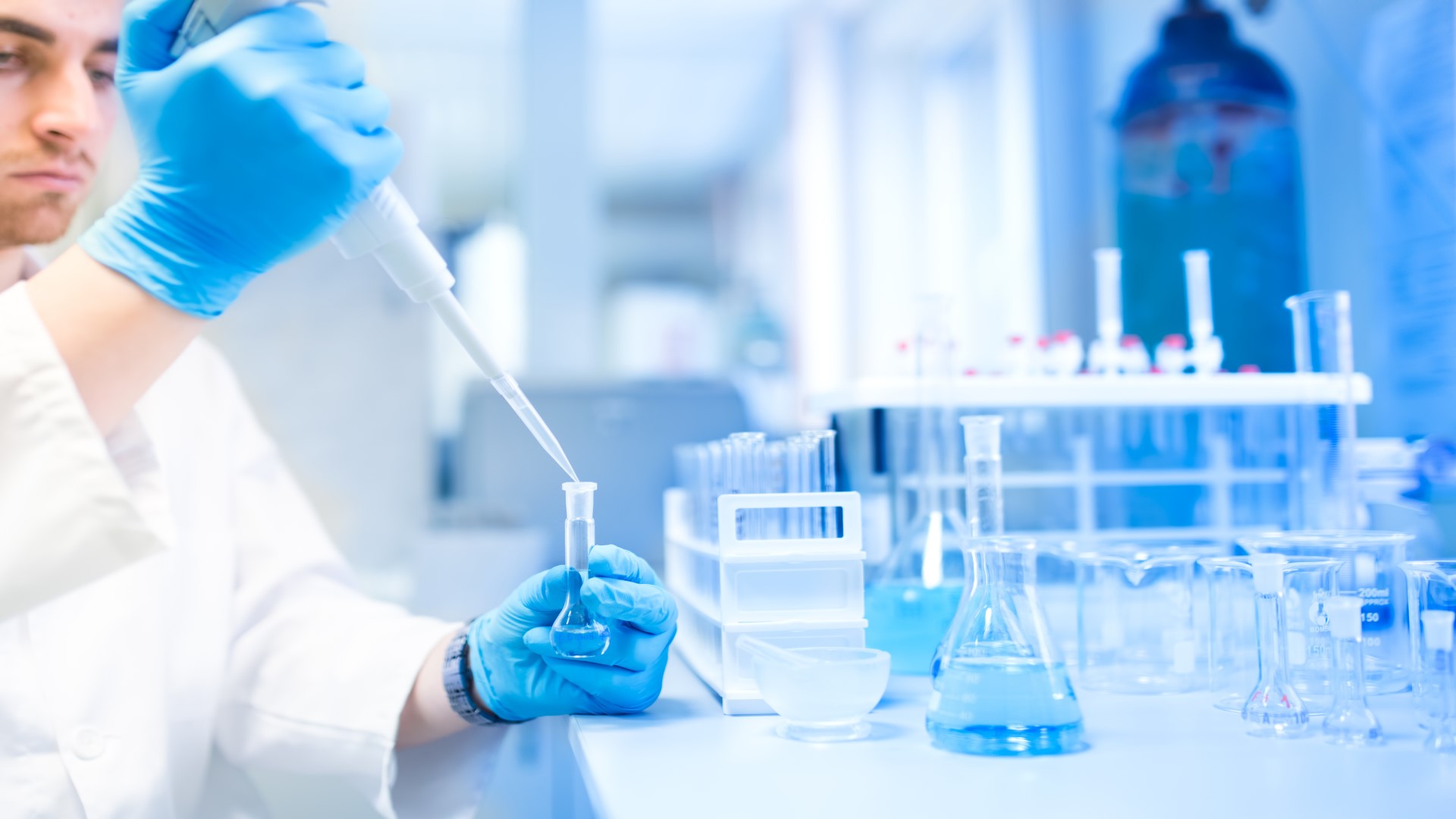SelectUSA Biopharmaceuticals Industry
Industry Overview
The United States is one of the largest markets for biopharmaceuticals and is the world leader in biopharmaceutical R&D. According to the Pharmaceutical Research and Manufacturers Association (PhRMA), biopharmaceutical firms in the U.S. spent about $96 billion on R&D in 2023. In 2023, total R&D by biopharmaceutical firms in the U.S. accounted for over 20 percent of total sales. The overall economic impact of the biopharmaceutical industry on the U.S. economy is substantial. In 2022, over $25 billion in biopharmaceutical exports were from majority foreign-owned firms operating in the United States. In the same year, these majority foreign-owned firms spent nearly $26 billion on R&D. Foreign direct investment in pharmaceuticals and medicines totaled $503.4 billion in 2023.
Employees in the biopharmaceutical industry in the United States work across a broad range of occupations, including scientific research, technical support, and manufacturing. Over 217,000 of these jobs were supported by foreign direct investment in 2022. In mid-2024, over 340,000 people were employed in the pharmaceutical and medicine manufacturing industry. The industry requires a highly-skilled and educated workforce from the administrative level up to and including Ph.D. scientists.
The United States has one of the world’s most supportive domestic environments for the development and commercialization of pharmaceuticals with minimal market barriers. Its strengths include an intellectual property system that rewards innovation through patent and data protection, a science-based regulatory system that is considered the most rigorous in the world, the largest scientific research base fostered by academic institutions and decades of government research funding, and robust capital markets. In 2023, in value terms, venture capital investments in pharmaceutical and biotechnology made up 13 percent of all venture capital investments in the United States.
Generic drugs are copies of innovative pharmaceuticals that contain the same active ingredient and are identical in strength, dosage form, and route of administration. In the United States, upon patent expiration or a successful challenge of relevant patents, a manufacturer can produce and sell a generic drug as long as it meets U.S. Food and Drug Administration (FDA) approval and bioequivalence standards. In the United States, 9 out of 10 prescriptions filled are for generic drugs. Generic companies typically focus on high volumes to earn profits, requiring efficient production methods and distribution chains. In 2023, FDA approved close to 1,000 generic drugs and funded approximately $20 million in generic drug R&D.
Innovative (originator) chemically-derived drugs are developed from extensive R&D and clinical trials in both human beings and animals. The innovator relies on patents, regulatory data protection and other forms of intellectual property rights (IPR) to justify the investment required to bring a product to market. The U.S. patent term is 20 years, and drugs are eligible for at least five years of market exclusivity depending on the time between patent validity and U.S. FDA approval.
Biologics (biotech drugs) include a wide range of products such as vaccines, therapeutic proteins, blood and blood components, tissues, etc. In contrast to chemically synthesized drugs, which have a well-defined structure and can be thoroughly verified, biologics are derived from living material (human, animal, microorganism or plant) and are vastly larger and more complex in structure. Biologic medicines are revolutionizing the treatment of cancer and autoimmune disorders and are critical to the future of the industry. In 2023, biologics accounted for approximately 30% of all new drugs approved and regulated by the Center for Drug Evaluation and Research (CDER).
Biosimilars (follow-on biologics) are versions of biologic products that reference the originator product in applications submitted for marketing approval to a regulatory body. Gaining regulatory approval in developed markets is far more complex for biosimilars than for chemical generics and may involve costly clinical trials. Those that succeed will also have to compete with the originator companies who are unlikely to exit the market. Biosimilars are usually priced 15% to 35% lower than the biologic reference product.
Over-the-counter (OTC) drugs are distinguished from innovative and generic drugs in that consumers do not need prescriptions to purchase them. OTC drugs are considered by regulators to be safe for self-diagnosis and self-medication. The OTC market in the United States is expected to continue growing due to an aging population, consumer trends towards self-medication, and the conversion of drugs from prescription to OTC status.
In 2023, the U.S. FDA Center for Drug Evaluation and Research (CDER) approved 55 novel drugs, either as new molecular entities or new therapeutic biologics. Among CDER’s approvals, 36% were first-in-class drugs, representing entirely new ways of treating disease.
Emerging sectors include precision medicine and regenerative medicine. Precision medicine includes treatment approaches that take into account individual variability in genes, environment, and lifestyle. Regenerative medicine includes rapidly evolving technologies such as cell and gene therapies and tissue-engineered biomaterials that repair or replace cells, tissues or organs. These technologies, which can cure diseases rather than simply slow their progression or manage symptoms, represent the next major innovation in healthcare. As of November 2024, the FDA has approved 41 cellular and gene therapy products.
Explore the impact of foreign direct investment on U.S. jobs, exports, and innovation in the biopharmaceuticals industry.
The Investor Guide is a high-level view of everything from taxes to immigration and workforce to business structures.
SelectUSA has created several dashboards to help analyze key FDI data from a variety of sources.





